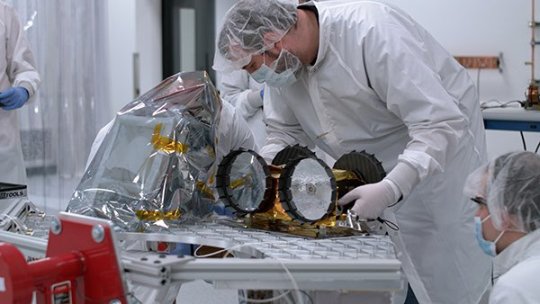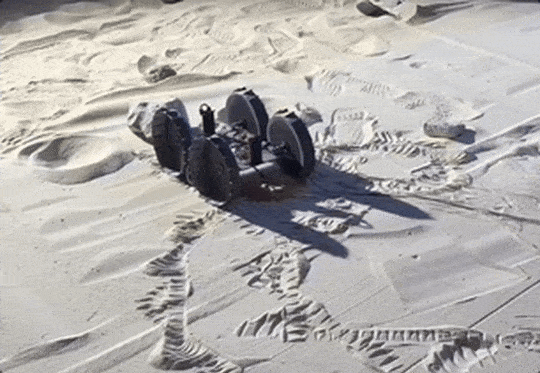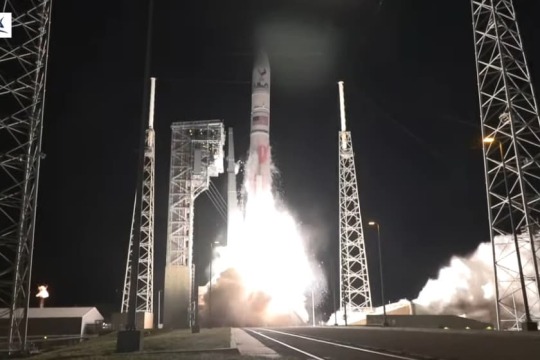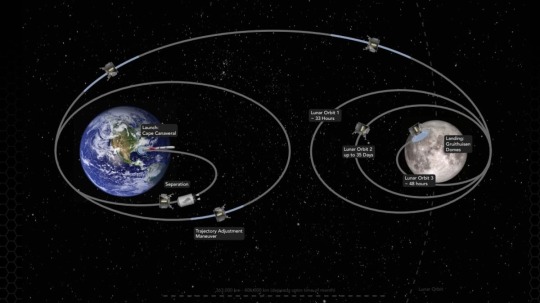#Vulcan Centaur
Text






























roman & greek gods + art
#souls on the banks of acheron by adolf hieremy-hirschl: hermes#the triumph of bacchus by diego velazquez: bacchus#diana the huntress by guillaume seignac: diana#jupiter and juno mount ida by james barry: juno & jupiter#apollo by charles joseph natoire: apollo#pallas and the centaur by sandro botticelli: pallas/athena#prometheus bound by peter paul rubens & frans snyders: prometheus#jupiter enthroned by heinrich friedrich fuger: jupiter#head of mars by unknown: mars#the birth of venus by sandro botticelli: venus#the abduction of psyche by william adolphe bouguereau: eros & psyche#venus adonis and cupid by annibale carracci: venus#diane the hunter by giuseppe cesari: diana#venus demanding arms from vulcan for aeneas by charles-joseph natoire: vulcan#hermes and athena by bartholomeus spranger#athena and pegasus by theodoor van thulden#orpheus and eurydice with pluto and proserpina by peter paul rubens#the apotheosis of hercules by francois lemoyne: neptune#allegory of air by antonio palomino: hera & iris#iris by john atkinson grimshaw: iris#morpheus awakening as iris draws near by rene-antoine houasse: morpheus#flora and zephyrus by jan brueghel the elder & peter paul rubens: zephyrus#a song of springtime by john william waterhouse: flora#justice and divine vengeance pursuing crime by pierre-paul prud'hon: nemesis#night and sleep by evelyn de morgan: nyx & morpheus#hemera goddess of the day by william-adolphe bouguereau: hemera#eos by evelyn de morgan: eos#selene and endymion by ubaldo gandolfi: selene#thetis bringing the armour to achilles by benjamin west: thetis#bellona with romulus and remus by alessandro turchi: bellona
637 notes
·
View notes
Link
🌏 Get Our Exclusive NordVPN deal here ➼ https://nordvpn.com/stuartgary or use the checkout code STUARTGARY. It’s risk-free with Nord’s 30-day money-back guarantee! ✌
The Space News Podcast.
SpaceTime Series 27 Episode 7
*NASA delays manned return to the Moon until 2026 NASA has scrubbed this year’s planned manned Artemis 2 mission around the Moon.
*A successful maiden flight for United Launch's new Vulcan Centaur rocket The United Launch Alliance's new Vulcan Centaur rocket has undertaken a successful maiden flight.
*NASA's Parker Solar Probe completes its closest encounter with the Sun NASA's Parker Solar Probe has just undertaken its 18th close approach to the Sun skimming just 7.26 million kilometres above the visible solar surface.
*The Science Report
Scientists have now confirmed that 2023 was the hottest year ever recorded on planet Earth.
The new cancer testing regime that picks up 18 different early stage cancers
Solving the mystery disappearance of the largest of the great apes from Asia.
Skeptics guide to consciousness
https://spacetimewithstuartgary.com https://bitesz.com
This week’s guests:
Dr. Keith Bannister from the CSIRO
Aaron Roodman Stanford Linear Accelerator Center
Brian Nord Fermilab
Ann Elliott Ohio State University
And our regular guests:
Alex Zaharov-Reutt from techadvice.life
Tim Mendham from Australian Skeptics
Listen to SpaceTime on your favorite podcast app with our universal listen link: https://spacetimewithstuartgary.com/listen and access show links via https://linktr.ee/biteszHQ
For more space news podcasts visit our HQ at https://bitesz.com
Your support is needed...
**Support SpaceTime with Stuart Gary: Be Part of Our Cosmic Journey!**
SpaceTime is fueled by passion, not big corporations or grants. We're on a mission to become 100% listener-supported, allowing us to focus solely on bringing you riveting space stories without the interruption of ads. 🌌
**Here's where you shine:**
Help us soar to our goal of 1,000 subscribers! Whether it's just $1 or more, every contribution propels us closer to a universe of ad-free content.
**Elevate Your Experience:**
By joining our cosmic family at the $5 tier, you'll unlock: - Over 400 commercial-free, triple episode editions. - Exclusive extended interviews. - Early access to new episodes every Monday.
Dive in with a month's free trial on Supercast and discover the universe of rewards waiting for you! 🌠 🚀 [Join the Journey with SpaceTime](https://bitesznetwork.supercast.tech/) 🌟 [Learn More About Us](https://spacetimewithstuartgary.com)
Together, let's explore the cosmos without limits!
#spacetime #astronomy #space #science #news #Podcast
#alliance#astronomy#centaur#launch#moon#nasa#news#parker#podcast#probe#rocket#science#solar#space#spacetime#united#vulcan
0 notes
Text




















another load of lunacid ocs
the squad:
Linfan belongs to @spinzzy
Vex belongs to @occultopossum
Varsak belongs to @rukafais
Salil belongs to @fire-bay
Vulcan belongs to @tiredseapotato
October belongs to @sprigtoon
Rita belongs to @ritterdoodles
the centaur in the middle is actionem's old design
#lunacid#lunacid spoilers#moonvein burrows#iste#actionem#linfan#vex#varsak#salil#october#rita#my art#long post#gif warning#gif#my ocs#others ocs
83 notes
·
View notes
Text




Iris Lunar Rover by Carnegie Mellon University, Pittsburgh, PA (2024). Carnegie Mellon University (CMU) students and staff collaborated with Astrobotic to develop the Iris rover for Astrobotic’s inaugural lunar mission. It will be carried to the Moon by the Astrobotic Peregrine Mission One, launched on January 8th 2024, aboard the United Launch Alliance's (ULA) new Vulcan Centaur rocket. The rover is the size of a shoebox and weighs just 4lbs. It’ll be the first student-built rover to land on the moon and is equipped with cameras to observe the moon's terrain and enable remote guidance from Earth. The Peregrine lander and rover will reach the Moon on February 23rd 2024, and will land at the "Bay of Stickiness" on the northeast border of the "Ocean of Storms" – let's hope it doesn't live up to its name!
UPDATE: The Peregrine Lander began venting fuel soon after launch, making it difficult for Astrobotic to stabilise the spacecraft. The resulting loss of fuel means that it cannot attempt a moon landing.
43 notes
·
View notes
Text


Peregrine launch sees US on way to the Moon after five decades
By David Szondy
January 07, 2024
The first US Moon landing mission in 52 years is on its way after Astrobotic’s Peregrine Mission One (PM1) lifted off this morning from Launch Complex-41 at Cape Canaveral Space Force Station in Florida atop a ULA Vulcan rocket at 2:18 am EST.
Under cloudy skies, the launch of PM1 took place without major delays or incidents. At one minute 16 seconds into the flight, the Vulcan/Centaur launcher reached maximum dynamic pressure. Reaching the one-minute-50-second mark, the solid rocket boosters separated from the Vulcan core stage. At the four-minute-59 second mark, the two first stage liquid fuel engines shut down, with stage separation following six seconds later.
The second stage then ignited and burned for two additional engine burns. After the Centaur stage shut down, the Peregrine spacecraft separated at 50 minutes into the flight.
The Centaur stage then fired again, sending it into a heliocentric orbit where it deployed the Celestis Memorial Spaceflight’s "Enterprise Flight" payload, which carries the cremated remains or DNA of a number of celebrities, including Gene and Majel Roddenberry, Nichelle Nichols, DeForest Kelley, and James Doohan. Peregrine also has the remains or DNA of 66 other individuals as part of the Celestis "Tranquility Flight" to the lunar surface.
As the Peregrine lander's systems powered up, contact was established with Astrobotic’s Mission Control Center, which will oversee operations from now on as Peregrine embarks on its 17-to-19-day cruise phase to lunar orbit during which it will orbit the Earth once before inserting into a lunar transfer orbit.
On reaching lunar orbit, Peregrine will carry out a series of orbital maneuvers to bring it closer to the lunar surface for up to 39 days until it gets the green light to land sometime in February 2024 at Sinus Viscositatis next to the Gruithuisen Domes on the northeast border of Oceanus Procellarum. This is an area of particular interest to geologists and it is hoped that the domes, which were formed out of granite-like substances, may shed light on the presence of water under the lunar surface or trapped in minerals.
Also onboard Peregrine are 20 payloads. Five of these are NASA experiments sent as part of the Artemis program and 15 more from international organizations. One of these is the Iris Lunar Rover built by Carnegie Mellon University. This means the PM1 is not only the first US lunar landing mission in over half a century and the first using a privately owned and operated spacecraft, it is also the first American mission to carry a lunar robotic rover.
The video below recaps the launch of PM1.
Source: New Atlas
#science#space exploration#moon#lunar landing#NASA#Peregrine Mission One#Peregrine Lunar Lander#Astrobotic Technology#ULA#Gene Roddenberry#Majel Barrett-Roddenberry#Nichelle Nichols#James Doohan#DeForest Kelley
4 notes
·
View notes
Text
2023 Space and Astronomy News: What to Expect
https://sciencespies.com/space/2023-space-and-astronomy-news-what-to-expect/
2023 Space and Astronomy News: What to Expect

As years in space and astronomy go, 2022 is going to be a tough act to follow.
NASA wowed us with cosmic scenes captured by the James Webb Space Telescope. The DART mission slammed an asteroid into a new orbit. Artemis I set humanity on a course back to the moon. China finished building a new space station in orbit. SpaceX launched 61 rockets in 12 months. And the invasion of Ukraine imperiled Russia’s status as a space power.
It’s a lot to measure up to, but 2023 is bound to have some excitement on the launchpad, the lunar surface and in the sky. Once again, you can get updates on your personal digital calendar by signing up for The New York Times’s Space and Astronomy Calendar. Here are some of the major events you can expect. Not all of them have certain dates yet, but Times journalists will provide additional information as it emerges. Learn more at nytimes.com/spacecalendar
New Rockets
NASA got its giant Space Launch System off the ground for the first time in 2022, lighting up the night in Florida with an incredible stream of flame as it carried the Artemis I mission toward the moon. That shifted attention to SpaceX, which is building a next generation rocket, Starship, that is also central to NASA’s crewed Artemis III moon landing attempt.
SpaceX cleared a key environmental review that would allow it to launch an uncrewed orbital test flight from South Texas if it met certain conditions. But the rocket wasn’t ready for flight in 2022. The company has not announced a date for a test this year, but regular ground tests of Starship equipment indicate it is working toward one.
The pathfinder first stage of the Vulcan Centaur, a new rocket by United Launch Alliance that will eventually replace that company’s Atlas V.United Launch Alliance
Numerous other rockets may take flight for the first time in 2023. The most important, Vulcan Centaur by United Launch Alliance, will eventually replace that company’s Atlas V, a vehicle that has been central to American spaceflight for two decades. The Vulcan relies on the BE-4 engine built by Blue Origin, the rocket company founded by Jeff Bezos. The same engine will in turn be used in Blue Origin’s New Glenn rocket, which may have a test flight late this year.
A number of American private companies are expected to test new rockets in 2023, including Relativity and ABL. They could be joined by foreign rocket makers, including Mitsubishi Heavy Industries which could test Japan’s H3 rocket in February, and Arianespace, which is working toward a test flight of Europe’s Ariane 6 rocket.
New Lunar Landings
We’re guaranteed at least one lunar landing attempt in 2023. A Japanese company, Ispace, launched its M1 mission on a SpaceX rocket in December. It’s taking a slow, fuel-efficient route to the moon and is set to arrive in April, when it will try to deploy a rover built by the United Arab Emirates, a robot built by Japan’s space agency, JAXA, as well as other payloads.
There could be as many as five more lunar landing attempts this year.
NASA has hired a pair of private companies to carry payloads to the lunar surface. Both of them, Intuitive Machines of Houston and Astrobotic Technology of Pittsburgh, faced delays in 2022, but may make the trip in the coming months.
They could be joined by three government space programs’ lunar missions. India’s Chandrayaan-3 mission was delayed last year but could be ready in 2023. A Japanese mission, Smart Lander for Investigating Moon, or SLIM, aims to test the country’s lunar landing technologies. Finally, Russia’s Luna-25 mission was postponed from last September, but Roscosmos, the Russian space agency, may try this year.
New Space Telescopes
Scientists in 2019 at work with the European Space Agency’s Euclid spacecraft, which will study energy and dark matter. Its 2022 launch was postponed by the Russian invasion of Ukraine.S. Corvaja/European Space Agency
The Webb telescope wowed space enthusiasts and scientists with its views of the cosmos, but we may get new vantages from a variety of orbital observatories.
The most significant may be Xuntian, a Chinese mission setting off later in the year that will be like a more sophisticated version of the Hubble Space Telescope. The spacecraft will survey the universe at optical and ultraviolet wavelengths in an orbit around Earth close to the country’s Tiangong space station.
A Japanese-led mission, XRISM, pronounced chrism, could launch earlier in the year as well. The mission will use X-ray spectroscopy to study clouds of plasma, which could help to explain the universe’s composition. A European space telescope, Euclid, may also launch on a SpaceX rocket after the Russian invasion of Ukraine resulted in the spacecraft losing its seat on a Russian Soyuz rocket. It will study the universe’s dark energy and dark matter.
New Planetary Missions
A new spacecraft will head toward Jupiter this year, aiming to become the first to ever orbit another planet’s moon. The European Space Agency’s Jupiter Icy Moon Explorer, or JUICE, will launch from an Ariane 5 rocket as early as April 5 to set off to the Jovian system, arriving in 2031. Once it reaches the gas giant, it will move to conduct 35 flybys of three of the giant world’s moons: Callisto, Europa and Ganymede, all of which are believed to have subsurface oceans. In 2034, JUICE will begin orbiting Ganymede, the largest moon in the solar system.
Heading closer to the sun will be Rocket Lab, a small launch company that was founded in New Zealand. It aims to use its Electron rocket to send a mission to Venus. The company’s Photon satellite will try to deploy a small probe, built with Massachusetts Institute of Technology researchers, that will briefly study the planet’s toxic atmosphere. The mission was planned for May, but it is expected to face delays while the company prioritizes missions for its other customers.
A Total Eclipse and a Not-So-Total One
There will be two solar eclipses in 2023.
A total eclipse on April 20 will be more of a Southern Hemisphere event, and the moon will only blot out the sun in remote parts of Australia and Indonesia. (Perhaps not a bad time to be on a boat in parts of the Indian and Pacific Oceans, too.)
But Americans may get a good show on Oct. 14, when North America will be visited by an annular eclipse. Eclipses of this type are sometimes called “ring of fire” eclipses because the moon is too far from Earth to fully block the sun but creates a ring-like effect when it reaches totality. The eclipse’s path runs through parts of Oregon, California, Nevada, Utah, Arizona, New Mexico and Texas before dipping into Central and South America. Where the weather cooperates, it should be a great solar show and a nice lead up for the April 8, 2024 total eclipse that will cross the United States from southwest to northeast.
#Space
3 notes
·
View notes
Text
Futuro das tecnologias espaciais. A tendência - e por que ela é importante

A rápida redução dos custos tecnológicos na última década resultou em um aumento na viabilidade e relevância das tecnologias espaciais. Custos menores, atribuíveis à redução no tamanho, peso e necessidades energéticas de satélites e veículos de lançamento, levaram a um crescente número de lançamentos e aplicações para tecnologias espaciais. Testemunhamos o surgimento da conectividade de internet via satélite em larga escala - pioneiramente desenvolvida pela Starlink, da SpaceX, com mais de 5.000 satélites em órbita terrestre baixa (LEO) - e um aumento no envolvimento do mercado privado e inovação em veículos de lançamento. O crescente número de casos de uso também atraiu a atenção e o investimento de empresas não ligadas à tecnologia espacial, que veem uma série de oportunidades nas áreas de conectividade remota, observação da Terra em diversas frequências, entre outras. As receitas da "espinha dorsal" da indústria - ou seja, provedores de hardware e serviços espaciais - podem potencialmente crescer para mais de 750 mil milhões de dólares até 2035, mas a adoção de diferentes tecnologias espaciais varia amplamente. Enquanto algumas tecnologias estão implantadas e se expandindo rapidamente, muitas atividades da futura indústria espacial, como mineração espacial e fabricação em órbita, ainda estão em estágio inicial e terão que navegar por uma série de obstáculos tecnológicos e geopolíticos nos próximos anos.

Desenvolvimentos recentes
Os desenvolvimentos recentes envolvendo tecnologias espaciais incluem:
- Crescimento contínuo das constelações de comunicações de satélites LEO. Constelações de satélites LEO estão em vários estágios de planejamento e implantação, com múltiplas empresas lançando e implantando constelações para uso comercial e governamental. Após apenas alguns anos de operação comercial, a Starlink viu um rápido crescimento em 2023, alcançando mais de 2,3 milhões de assinantes em mais de 60 países e lançando novos satélites em órbita a cada poucos dias. Potenciais concorrentes, como o Project Kuiper da Amazon, estão testando seus produtos na esperança de introduzir serviços comerciais em breve.
Interesse e expansão esperada da conexão direta para dispositivos continua. Após o lançamento da conexão de emergência direta para dispositivos (D2D) da Apple em seu iPhone, as empresas aumentaram seu foco nessa tecnologia para ampliar sua cobertura em áreas remotas. A SpaceX concluiu testes bem-sucedidos em parceria com a T-Mobile. A Viasat e a Skylo anunciaram a primeira rede D2D global do mundo, tendo como clientes-alvo indústrias como agricultura, mineração e logística.
Aumento da atividade global de lançamentos. A empolgação e atenção sobre lançamentos continuaram em 2023, com uma estimativa de 223 tentativas de lançamentos contra 186 em 2022, um aumento de 20%. A maioria desses lançamentos é de empresas baseadas nos EUA, principalmente a SpaceX. No entanto, houve um aumento significativo na atividade de outros países, como França e Índia, que estão começando a investir mais em exploração e envolvimento espacial. A estreia do Vulcan Centaur - um novo foguete movido a metano da United Launch Alliance - no início de 2024 marcou o início de duas missões de certificação, adicionando uma nova alternativa de lançamento ao mercado.
Atividade lunar continuou nos setores público e privado. Em janeiro de 2024, o Japão concluiu com sucesso o primeiro pouso lunar do país e o mais preciso do mundo até então. Este evento representa o interesse expandido em pousos lunares em diferentes geografias entre as esferas pública e privada. Uma série de empresas privadas, como Astrobotic Technology e Intuitive Machines, têm se concentrado fortemente na construção de módulos de pouso lunar, com o Odysseus da Intuitive Machines conseguindo pousar a primeira nave espacial dos EUA na Lua desde 1972. A NASA recentemente selecionou a Intuitive Machines, junto com a Lunar Outpost e a Venturi Astrolab, para avançar as capacidades do veículo de terreno lunar para os astronautas da Artemis, permitindo que eles conduzam pesquisas científicas na Lua e se preparem para futuras missões a Marte.
A integração de ofertas em soluções de ponta a ponta é impulsionada pelo aumento do interesse de setores não ligados à tecnologia espacial. As empresas de tecnologia espacial estão cada vez mais focadas em fornecer soluções de ponta a ponta (E2E) à medida que o mercado amadurece e os clientes, particularmente as empresas, exigem integração perfeita com sua infraestrutura existente e menos complexidade na implementação. Vemos isso através de parcerias únicas entre empresas de tecnologia espacial (como aquelas que oferecem tecnologia D2D ou análise de sensoriamento remoto) e empresas em indústrias como mineração, agricultura e sustentabilidade que buscam soluções tanto de hardware quanto de software. Por exemplo, a Planet Labs tem contratos com a Swiss Re e outras seguradoras para usar seus satélites e software para observar e fornecer análises para apoiar o seguro agrícola paramétrico.
"O espaço continua a acelerar na consciência pública, mas a adoção é desigual, e o financiamento está cada vez mais fluindo para os 'vencedores'. Progresso real está sendo feito para cumprir as promessas de 2020-21."
Jesse Klempner , sócio, Washington, DC

Desenvolvimentos de adoção ao redor do globo
As ferramentas de tecnologia espacial são mais específicas para algumas indústrias e, portanto, experimentam níveis relativamente baixos de adoção relatada em todo o mercado mais amplo. Talvez não surpreendentemente, os entrevistados de empresas de energia e materiais e de telecomunicações, mídia e tecnologia relataram que estão escalando ou já escalaram mais do que outras indústrias, devido à centralidade da conectividade e do sensoriamento remoto nesses setores.
Dimensões de adoção
A trajetória de adoção para tecnologias avançadas varia para cada tecnologia e cada caso de uso dentro dessa tecnologia. Avanços ao longo das seguintes dimensões poderiam permitir o próximo nível de adoção:
A evolução tecnológica facilita o acesso mais fácil e a harmonização de dados espaciais e cria oportunidades para o surgimento de novos fluxos de receita. A melhoria da acessibilidade e usabilidade permite que players comerciais não ligados à tecnologia espacial abracem os dados espaciais, quebrando barreiras técnicas e fomentando casos de uso inovadores.
O aumento da demanda - por exemplo, através de requisitos regulatórios para observação de métricas-chave - poderia ser realizado por sensoriamento remoto baseado no espaço em uma gama mais ampla de verticais. Legislação substancial onde a verificação de emissões por terceiros é necessária ou benéfica, como o Regulamento de Desmatamento da UE, pode criar incentivos para que as empresas usem tecnologias baseadas no espaço para monitorar seu impacto ambiental. O crescimento da demanda também é possibilitado por um mundo cada vez mais conectado e móvel, gerando demanda por internet via satélite, serviços de posicionamento e navegação, e insights alimentados por IA e aprendizado de máquina para várias aplicações, incluindo resposta a desastres e detecção precoce de tendências.
Uma diminuição considerável dos custos de implementação para as empresas, auxiliada por uma maior integração E2E de dados, hardware, software e métodos baseados em ciência, permitiria que mais empresas acessassem a tecnologia, integrando não apenas dados de satélite, mas também outros insights relevantes. Por exemplo, pode ajudar no campo da sustentabilidade, com cálculos certificáveis de emissões de Escopo 3 ou necessidades de certificação.
Na vida real
Exemplos do mundo real envolvendo o uso de tecnologias espaciais incluem:
- A John Deere formou uma parceria comercial com a Starlink da SpaceX para trazer conectividade D2D para suas máquinas agrícolas. Isso permitirá novos recursos em máquinas novas e existentes, como compartilhamento de dados em tempo real, opções aprimoradas de autorreparo (por exemplo, suporte conectado e atualizações de software) e comunicação máquina a máquina para agricultores em locais remotos.
A Qatar Airways anunciou que começará a instalar o Starlink em aviões selecionados para Wi-Fi de passageiros. A empresa afirma que os clientes poderão alcançar velocidades de até 350 megabits por segundo, o que é mais rápido do que em muitas residências na América do Norte. Outras companhias aéreas que incorporam o Starlink incluem JSX, Hawaiian Airlines, airBaltic e ZIPAIR.
A Índia pousou com sucesso seu módulo lunar Chandrayaan-3 na Lua em agosto de 2023. Isso torna a Índia a quarta nação a pousar com sucesso uma nave espacial na Lua e a primeira a pousar no inexplorado lado sul.
Com a Estação Espacial Internacional atualmente programada para ser aposentada por volta do final de 2030, várias empresas comerciais estão competindo para construir e operar estações espaciais em órbita terrestre baixa.
O governo australiano contratou a empresa de análise geoespacial HawkEye 360 para usar seus satélites de sensoriamento remoto e análise de dados de radiofrequência em um programa piloto para detectar e prevenir atividades de pesca ilegal e não regulamentada nas Ilhas do Pacífico. A HawkEye 360 opera uma constelação de 21 satélites, com planos de expandir para 60 satélites até 2025.
A start-up de nanossatélites Fleet Space Technologies comprou participação na empresa de exploração mineral Thor Energy após levantar 33 milhões de dólares em sua rodada Série C em meados de 2023. Juntas, as empresas realizarão testes de exploração mineral usando a tecnologia ExoSphere da Fleet Space, que utiliza seus satélites e tecnologias de matriz sísmica para criar modelos 3D de locais de exploração mineral.
"Por tanto tempo, o espaço tem sido fascinante, mas distante da realidade. Agora, é uma das maiores influências em nossas vidas diárias - desde nos guiar em nossos deslocamentos diários até facilitar operações de socorro em desastres. As tecnologias espaciais permitem impacto na Terra."
Giacomo Gatto , sócio, Londres
Tecnologias subjacentes
As tecnologias espaciais fundamentais incluem:
- Pequenos satélites. Satélites pequenos modulares podem ser construídos sob medida - usando arquiteturas CubeSat e blocos de construção de tamanho padrão - para realizar uma variedade cada vez maior de missões.
Sensoriamento remoto. Imagens e monitoramento de espectro completo são usados para observar as características da Terra, como oceanografia, clima e geologia.
Avanços em SWaP-C. Reduções no tamanho, peso, potência e custo (SWaP-C) de satélites e veículos de lançamento aumentaram a relação custo-benefício da tecnologia espacial e casos de uso associados.
Avanços na tecnologia de lançamento. Avanços tecnológicos (por exemplo, design auxiliado por computador e ciências dos materiais), a reutilização de estruturas de propulsores e motores, o advento de novos veículos de lançamento pesado de menor custo e o aumento nas taxas de lançamento estão abrindo o acesso ao espaço. Vemos potencial para tecnologias de lançamento mais avançadas, como propulsão nuclear.
Tecnologias de conectividade avançada. Essas tecnologias, incluindo comunicações a laser, antenas escaneadas eletronicamente e operações de satélites automatizadas, devem progredir nos próximos anos.
Confira o artigo original na página 82 do mckinsey-technology-trends-outlook-2024.pdf, abaixo. Produzido pela McKinsey Digital / McKinsey amp; Company .
Principais incertezas
As principais incertezas que afetam o futuro das tecnologias espaciais incluem:
- A relação custo-benefício das tecnologias espaciais é necessária para permitir maior escalabilidade.
Os mecanismos de governança precisam definir melhor a alocação de direitos de uso de espectro e órbita para acomodar o número crescente de players, satélites e aplicações.
Os riscos cibernéticos, incluindo violações de dados, malware e outros ataques cibernéticos, estão crescendo em número e complexidade devido à proliferação de players comerciais.
Grandes questões sobre o futuro
As empresas e líderes podem querer considerar algumas questões ao avançar com as tecnologias espaciais:
Como os líderes podem definir direitos de propriedade e acesso ao espaço e Tecnologias de conectividade avançada. Essas tecnologias, incluindo comunicações a laser, antenas escaneadas eletronicamente e operações automatizadas de satélites, devem progredir nos próximos anos.
Principais incertezas
As principais incertezas que afetam o futuro das tecnologias espaciais incluem:
A relação custo-benefício das tecnologias espaciais é necessária para permitir maior escalabilidade.
Mecanismos de governança precisam definir melhor a alocação de direitos de uso de espectro e órbita para acomodar o número crescente de players, satélites e aplicações.
Os riscos cibernéticos, incluindo violações de dados, malware e outros ataques cibernéticos, estão crescendo em número e complexidade devido à proliferação de players comerciais.
Grandes questões sobre o futuro
Empresas e líderes podem querer considerar algumas questões ao avançar com tecnologias espaciais:
Como os líderes podem definir direitos de propriedade e acesso ao espaço e seus recursos?
Quais são as implicações de longo prazo da crescente dependência de tecnologias espaciais para infraestrutura crítica e segurança nacional?
Como as empresas podem equilibrar os benefícios das tecnologias espaciais com preocupações éticas e de privacidade?
Qual é o papel das parcerias público-privadas no avanço da exploração e utilização do espaço?
Como as empresas podem se preparar para os desafios e oportunidades apresentados pela comercialização do espaço?
Space: The $1.8 trillion opportunity for global economic growth, McKinsey, April 8, 2024.
Starlink's rapid growth and influence has made it an indispensable part of Elon Musk's SpaceX, CNBC, November 11, 2023.
Space activities in 2023, Jonathan McDowell, January 15, 2024.
NASA selects companies to advance moon mobility for Artemis missions, NASA press release, April 3, 2024.
How satellite data is changing agriculture insurance, Planet Labs, December 6, 2023.
John Deere announces strategic partnership with SpaceX to expand rural connectivity to farmers through satellite communications, John Deere press release, January 16, 2024.
Qatar Airways selects Starlink to enhance in-flight experience with complimentary high-speed internet connectivity, Qatar Airways press release, October 13, 2023.
Chandrayaan-3 spacecraft lands on the moon in 'victory cry of a new India', Reuters, August 23, 2023.
How India became the first country to reach the moon's south pole, Time, August 23, 2023.
HawkEye 360 working with the Pacific Islands Forum Fisheries Agency for greater maritime visibility in the Pacific Islands, HawkEye 360 press release, July 6, 2023.
0 notes
Text

🔧🚀 Inside the ULA Vulcan Centaur Production Line
Step into ULA’s Vulcan Centaur production line and witness the assembly of this next-generation rocket. Recently, ULA began producing the Vulcan Centaur to meet diverse customer needs, from various Earth orbit placements to handling a wide range of payload shapes and weights.
In this rare behind-the-scenes view, we see the first stage of the Vulcan Centaur in its early development phase, with Blue Origin’s BE-4 engines installed but still exposed, revealing the intricate network of pipes before the engine shielding is applied.
The Vulcan Centaur is set to be a versatile powerhouse, poised to become a significant asset to the spaceflight industry. What fascinates you most about the Vulcan Centaur? Share your thoughts below and stay tuned for more ULA artwork!
#art#digital art#art community#space art#innovation#space exploration#spaceflight#rocket art#outer space
0 notes
Photo

Американская ракета Vulcan Centaur выведет в космос экспериментальный спутник
Издание ArsTechnica сообщило, что в США готовятся ко второму испытательному запуску ракеты-носителя Vulcan Centaur с полезной нагрузкой для Исследовательской лаборатории Военно-воздушных сил (ВВС) США.
Подробнее на https://7ooo.ru/group/2024/07/24/614-amerikanskaya-raketa-vulcan-centaur-vyvedet-v-kosmos-eksperimentalnyy-sputnik-grss-326901994.html
0 notes
Text

A third attempt will be made to launch Boeing CFT the first crewed mission of the Starliner today (5 June) at 15:52 BST with launch coverage from 11:45 BST, the weather forecast is 90 percent favourable. Saturdays (1 June) launch was aborted at T-3 seconds due to a power supply problem to one of the three computers which together comprise the Ground Launch Sequencer which controls the terminal countdown. So nothing to do with Starliner or even the Atlas V. The launch countdown on 7 May had to be halted when a relief valve on the liquid oxygen tank of the Centaur upper stage began to open and close rapidly or 'buzz' as it's called. This ultimately had to be replaced back in the assembly building, or Vertical Integration Facility (VIF) a mile from the pad. Concurrently a helium leak was detected within the Starliner Service Module concerning one (one of 28) Reaction Control System (RCS) thruster used mainly for attitude control. Since that leak is so small they have decided to launch with the leak and just keep an eye on it, since there is enough helium onboard to cope with the slight loss. The crew Commander Captain Barry 'butch' Wilmore and Pilot Captain Sunita 'sunni' Williams remained at the Kennedy Space Centre in quarantine since the launch attempt last Saturday.
The Boeing CFT and Atlas V are pictured after arrival at SLC-41 from the VIF last Thursday (30 May) before the crew access arm was swung into place. LC-41 was built in 1964 to launch Titan III and later Titan IV launchers, it was converted to launch Atlas V in 2002 and now it has been further modified to also be capable of launching the new Vulcan Centaur. Pic: ULA
0 notes
Text
Ask Angry?
The Angry Astronaut didn’t know what to talk about, so he let the viewers ask questions about what interested them. I’m glad they asked about some of the things in my comments about space.
I suggested using the VULCAN CENTAUR – United Launch Alliance, because there are less than 20 Atlas Vs left. Space.SkyRocket.de lists rocket…

View On WordPress
0 notes
Link
The Space News Podcast.
SpaceTime Series 27 Episode 4
*Astronomers study the earliest Milky Way type galaxy ever seen
A new snapshot of an ancient, far-off galaxy could help scientists understand the origins of our own Milky Way.
*What lies in the exotic heart of a neutron star
New theoretical analysis is showing further support for the hypothesis that the cores of neutron stars are composed of deconfined quark matter.
*Vulcan Centaur launch delayed until today
The United Launch Alliance has delayed the maiden flight of its new Vulcan Centaur rocket until today.
*The Science Report
A major breakthrough in diabetes research
Juvenile T-Rex fossils reclassified into a separate and distinct species of small tyrannosaur.
Why we love horror movies.
Skeptics guide to ghosts vs physics
This week’s guests:
Dr Takafumi Tsukui from the Australian National University
And our regular guests:
Alex Zaharov-Reutt from techadvice.life
Tim Mendham from Australian Skeptics
🌏 Get Our Exclusive NordVPN deal here ➼ https://nordvpn.com/stuartgary or use the checkout code STUARTGARY. It’s risk-free with Nord’s 30-day money-back guarantee! ✌
Listen to SpaceTime on your favorite podcast app with our universal listen link: https://spacetimewithstuartgary.com/listen and access show links via https://linktr.ee/biteszHQ
For more podcasts visit our HQ at https://bitesz.com
Your support is needed... **Support SpaceTime with Stuart Gary: Be Part of Our Cosmic Journey!**
SpaceTime is fueled by passion, not big corporations or grants. We're on a mission to become 100% listener-supported, allowing us to focus solely on bringing you riveting space stories without the interruption of ads. 🌌
**Here's where you shine:**
Help us soar to our goal of 1,000 subscribers! Whether it's just $1 or more, every contribution propels us closer to a universe of ad-free content.
**Elevate Your Experience:**
By joining our cosmic family at the $5 tier, you'll unlock: - Over 350 commercial-free, triple episode editions. - Exclusive extended interviews. - Early access to new episodes every Monday.
Dive in with a month's free trial on Supercast and discover the universe of rewards waiting for you! 🌠 🚀
[Join the Journey with SpaceTime](https://bitesznetwork.supercast.tech/) 🌟 [Learn More About Us](https://spacetimewithstuartgary.com)
Together, let's explore the cosmos without limits!
#astronomy #space #science #news #podcast
#alliance#astronomy#centaur#diabetes#galaxy#launch#milky-way#neutron#news#podcast#research#rocket#science#space#star#united#universe#vulcan
0 notes
Text
About Spirits
Spirit (plural spirits)- The source of the supernatural! Spirits are wondrous beings with all sorts of abilities! In addition to being able to shapeshift, the very laws of physics bend to their will! Spirits come in five varieties:
Gnome (plural gnomes)- Contrary to what you might think, gnomes are far from the short, stout men you’d find decorating a Western front yard. Gnomes are spirits that specialize in manipulating inorganic solid matter! They can pass through walls and floors like it’s air, too. Gnomes mostly have reptilian features on them, so if you see a chameleon- or turtle-like person suddenly moving the ground to their whim, you might just be looking at a gnome!
Psychopomp (plural psychopomps)- Death gods, shinigami, whatever you wanna call them, they can communicate with the souls of dead humans and animals—or so they claim—and they can even visit the realm of the dead! Or so they claim. Psychopomps look like all sorts of mammals, and because of that they’re some of the most diverse spirits around. Kitsune? Centaurs? Selkies? All three of those and more are psychopomps!
Sylph (plural sylphs)- Another of the classical elementals, sylphs can manipulate inorganic gasses of all sorts, or in Paracelsian terms, wind! Sylphs resemble birds, and they tend to make that clear by flaunting their beautiful wings! Those wings are mostly just for show, though, since they can fly just fine without them. Did you know tengu are sylphs? I didn’t until one of them told me!
Undine (plural undines)- Undines control the flow of inorganic liquid matter—mostly water! They’ve all got fish-like attributes to them, making them quite adept at swimming! Piss off an undine and you might just suffer a forty-day storm or a rogue wave! Do note that some undines specialize in manipulating water-adjacent matter, such as ice and mercury, so their abilities are quite diverse.
Vulcan (plural vulcans)- They prefer the term “vulcan” to “salamander” to minimize confusion and maximize brevity. Vulcans manipulate plasma (the state of matter), and it seems that humans in the old days mistook it as manipulating fire, because plasma can cause fires. Vulcans resemble amphibians, such as frogs and salamanders, the latter of which they got their historical name after. Vulcans are said to be some of the most destructive spirits; I’ve seen some discharge blasts of electricity and create miniature stars!
Ichor (uncountable)- A spirit’s body contains a substance called ichor, which is essentially their blood. It’s like the sand in the hourglass that tells them how long they have left to live: it slowly depletes over the course of hundreds of years, and if they ever receive a wound or expend too much of their energy, ichor leaks out. In either case, the spirit dies and dissolves into nothing.
Spirits can change their form, but only as much as their ichor allows them to. The more ichor a spirit has, the larger on average they are, because they can’t shrink to a smaller size.
Petrichor (uncountable)- A spirit’s skin. Petrichor is malleable and can expand or contract a good bit. However, it’s quite thin (about as thin as human skin), and breaking it causes ichor to bleed out. If a wound isn’t treated in time, then the spirit will eventually bleed out and die. Petrichor can be replenished by consuming organic matter, but ichor doesn’t, so spirits should still be careful with their bodies.
Petrichor is what allows spirits to change their form. In addition to being malleable, it can also change color and texture. Petrichor varies between spirits: a vulcan’s petrichor is warmer and smoother than that of a gnome, for example.
Spirits, overall, have extremely delicate physical bodies. Their petrichor is extremely thin, and puncturing it makes their ichor leak out and evaporate. Spirits don’t leave a trace when they die, which also means that they don’t have a fossil record, and their origins are still shrouded in mystery, even to themselves.
Spirits can live extremely long lives which can reach thousands of years. They also reproduce asexually, and every fifty years they lay a single egg from which their young hatches. Sexuality and gender are simply constructs to them, so spirits can identify however they please, whenever they please!
Eldritch (plural eldritch)- An eldritch is a term given to any spirit that’s still alive even when they’re supposed to be dead. Like a zombie, except they’re as intelligent as normal spirits are. Eldritch do require some living matter to feed off of to survive, though, and while some regularly feast on detritus or carrion, others will simply possess a living host and start a strange symbiotic relationship that depends from eldritch to eldritch. The powers of an eldritch typically exceed those of other spirits, but that’s not always the case.
Archspirit (plural archspirits)- Spirits have their own form of government; archspirits are leaders of their respective local populations, acting on their behalf and protecting them from harm. In that sense, they’re like tribe leaders. An archspirit’s abilities are also much more potent than that of an average spirit, to an extent that makes them comparable to eldritch, so they’re treated with great respect among the locals. For instance, Hamada Alchias is an archspirit who resides in Tokyo, and thus the spirits living in Tokyo are his subjects.
0 notes
Text
Vulcan Program Delay Shows US Can’t Even Copy, Much Less Replace, Russia’s Rocket Engine Know-How
By Ilya Tsukanov – Sputnik – 14.05.2024
A senior US Air Force official has sent defense contractors a strongly worded letter over delays to the Vulcan Centaur heavy-lift launch vehicle program – initiated to replace the workhorse Atlas V, which uses Russian-made RD-180 engines. The delay signals the US’s inability even to copy Russian-made equipment, a leading space researcher says.
US Air Force…

View On WordPress
0 notes
Link
Astrobotic đã đăng thông tin cập nhật thường xuyên về tình trạng của tàu đổ bộ Peregrine kể từ khi nó được tên lửa đẩy Vulcan Centaur thuộc Hãng United Launch Alliance đưa vào không gian hôm 8.1 để thực hiện sứ mệnh mặt trăng, theo AFP. "Đánh giá mới nhất của chúng tôi cho thấy con tàu vũ trụ đang trên đường tới trái đất, nơi nó có thể sẽ bốc cháy trong bầu khí quyển. Nhóm đang đánh giá các lựa chọn và chúng tôi sẽ cập nhật ngay khi có thể", Astrobotic (có trụ sở bang Pennsylvania) thông báo trên mạng xã hội X.Tàu đổ bộ Peregrine ở trong không gian được hơn 5 ngày và hiện ở cách hành tinh của chúng ta 390.000 km, theo Astrobotic.Tên lửa đẩy Vulcan Centaur mang tàu đổ bộ Peregrine rời khỏi bệ phóng tại Mũi Canaveral ở bang Florida (Mỹ) ngày 8.1Vài giờ sau khi được phóng từ mũi Canaveral ở bang Florida (Mỹ) hôm 8.1, tàu Peregrine đã bắt đầu bị rò rỉ nhiên liệu. "Không may là sự cố đã xảy ra ở hệ thống đẩy và đang gây ra tình trạng thất thoát nhiên liệu nghiêm trọng cho tàu đổ bộ", AFP hôm 9.1 dẫn cập nhật của hãng Astrobotic vào chiều 8.1 (theo giờ địa phương).Sau đó, Astrobotic công bố hình ảnh đầu tiên từ tàu đổ bộ Peregrine trong lúc đang bay đến mặt trăng. Hình ảnh cho thấy bộ phận kháng nhiệt đa lớp (MLI) màu bạc của tàu, và có vẻ như bộ phận này đã bị va chạm mạnh dẫn đến bề ngoài vặn vẹo.Tên lửa Vulcan Centaur đưa tàu vũ trụ Mỹ lên mặt trăngSứ mệnh mặt trăng của tàu Peregrine là cuộc hành trình đầu tiên của một tàu đổ bộ tư nhân theo chương trình đối tác thương mại nhằm giảm chi phí cho các hoạt động thám hiểm không gian của Cơ quan Hàng không Vũ trụ Mỹ (NASA) trong tương lai.
0 notes
Text
Just Because You Can Pay to Have Your Ashes Buried on the Moon Doesn't Mean You Should - Technology Org
New Post has been published on https://thedigitalinsider.com/just-because-you-can-pay-to-have-your-ashes-buried-on-the-moon-doesnt-mean-you-should-technology-org/
Just Because You Can Pay to Have Your Ashes Buried on the Moon Doesn't Mean You Should - Technology Org
Sending human ashes and personal mementoes to the Moon is now possible, but it opens up a maze of legal and ethical conundrums.
When NASA attempted to return to the Moon for the first time in 50 years, more was at risk than just US$108 million worth of development and equipment.
The Moon is smaller than Earth, and this fact is also one of the reasons why its gravity is not sufficient to retain any atmospheric gases near its surface. Image credit: NASA
The agency earned the ire of the Native American Navajo people, who made a bid to stop the launch because of an unusual inclusion in the payload.
The Peregrine lander (which completed its controlled re-entry into the atmosphere late last week) carried human ashes, including those of famed science fiction author Arthur C. Clarke. A commercial partnership also allowed paying customers to send their mementos to the Moon.
As space exploration becomes increasingly privatised and commercial, you can now send your favourite stuff to the Moon. But what does that mean, both ethically and legally?
The Moon open for business
US company Astrobotic owns the Peregrine, which is the size of a small car. It ran into fatal fuel issues shortly after being launched on Vulcan Centaur rocket from Cape Canaveral.
On board are “vanity canisters”. The idea arose in a partnership between the firm and global freight company DHL.
Under the deal, anyone can send two and a half centimetre by five centimetre package to the lunar surface for less than US$500. Apart from size, there were a few other limitations on what each package could contain.
Astrobotic, founded in 2007 and based in Pittsburgh, Pennsylvania, is one of several US companies providing commercial lunar payload services to NASA to deliver science and technology to the Moon. Peregrine was also carrying scientific instruments from six countries and many science teams.
Perhaps surprisingly, sending ashes into space is not new aboard suborbital and Earth orbital flights.
Two American companies make a business of the service starting at just a few thousand dollars – Celestis and Elysium Space. The practice is embraced by many, including astronauts who have been in space.
A Moon burial (yes, you can buy one) costs more – around US$13,000.
Commercial payloads launched from US soil require approval, but that approval process only covers safety, national security, and foreign policy.
Peregrine, if it had made it, would have marked the first commercial lunar burial. It’s uncharted territory as other worlds become within reach, although it is not the first time it has come up.
NASA pledged to consult in the future after an outcry from the Navajo when, 20 years ago, it carried some of Eugene Shoemaker’s ashes to the Moon aboard the Lunar Prospector probe. Like many other indigenous cultures, the Navajo Nation considers the Moon sacred and opposes using it as a memorial site.
However, NASA said in a press briefing it had no control over what was on Peregrine, highlighting the gaps between commercial enterprise and international space law.
A legal minefield
Another question concerns the rules in individual nations on where and how human ashes can be located, handled, and transported and how those could extend to space. For example, in Germany, ashes must be buried in a cemetery.
With space privatisation accelerating, the ethical and legal maze deepens.
The Outer Space Treaty (OST) declares space the “province of all mankind” while banning national appropriation.
It fails, however, to address what private companies and individuals can do.
The recent Artemis Accords, signed by 32 nations, expand protection to lunar sites of historical significance. But these protections only apply to governments, not commercial missions.
And no one owns the Moon to grant burial rights, or any other world or celestial body.
The treaty requires states to authorise and supervise activities in space. It requires “due regard” for the interests of other states.
Many countries have space law that includes grounds for refusing payload items not in their national interest, for example Indonesia and New Zealand.
Nations apparently without such consideration, including Australia and the US, may need to consider expanding this template with the emergence of the commercial world in a traditionally governmental arena.
Where to draw a line?
Earth’s orbit is already clogged with defunct satellites and, further out, items like Elon Musk’s Tesla.
According to space archaeologist Alice Gorman, we have already spread space probes across other worlds, including the Moon, Mars, Titan, and Venus, but much may be treasure rather than junk.
For example, the Apollo astronauts left official mementos, such as a plaque marking the first human footsteps on the lunar surface. Some have left personal ones, too, like Apollo 16’s Charles Duke, who left a framed family photo.
However, sending a clipping of your hair or the ashes of your pet dog to the Moon may not qualify as culturally and historically important.
The problem, therefore, is where we want to place a line in the sand as we step out into the cosmos onto the shorelines of other worlds.
We cannot turn back the clock on private space enterprise, nor should we.
But this failed mission with ashes and vanity payloads exemplifies the unexplored questions in the legal and ethical infrastructure to support commercial activities.
It is worth pausing for thought on future commercialisation such as mining asteroids and the eventual colonisation of space.
Source: UNSW
You can offer your link to a page which is relevant to the topic of this post.
#000#asteroids#astronauts#Astronomy news#atmosphere#Australia#board#Business#Companies#cosmos#deal#development#dog#earth#earth's moon#Elon Musk#enterprise#equipment#Featured Space news#fuel#Future#Germany#Global#gravity#how#human#Image of the week#inclusion#Infrastructure#issues
1 note
·
View note